Last Updated on July 10, 2022 by
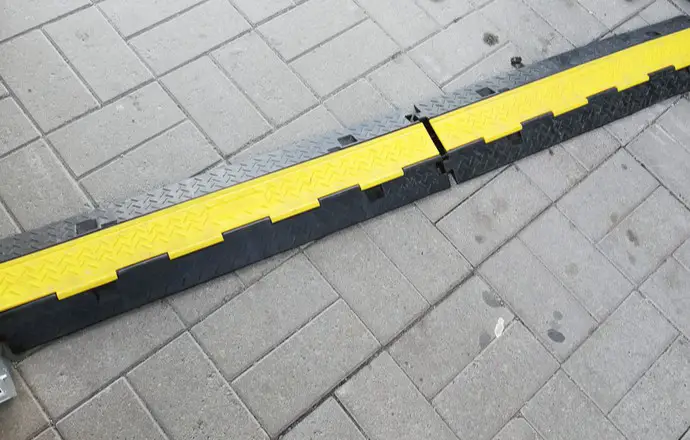
An electric vehicle (EV) owner might want to consider trailing a cable across a public pavement to charge their vehicle using the home electricity supply where there’s no off-street parking. The home supply is the cheapest way of charging an EV, and charging the car at or near home is convenient. However, there are some complications with doing this, which we will explore.
Is It legal?
The first question many will ask is whether it’s legal. The pavement is part of the public highway, so is it permitted to lay a cable across it for the purposes of charging an electric car battery, particularly given that it will probably take several hours to charge? The short answer is this is currently a bit of grey area.
Managing the public highway falls within the remit of the local council, acting as the Highway Authority. The Local Government Association, representing local councils up and down the country, says that they are not aware of any legislation making cable trailing illegal. Having said that, many local councils have a stance on it, and it’s worth finding out what their advice is.
Is It Encouraged?
Many councils, looking ahead to a much more widespread take-up of plug-in electric vehicles, are not very encouraging of the practice, as they can foresee multiple trailing cables which could clutter the pavements. Instead they are much more focused on accessing government grants to roll out on-street charge points, thus removing the need for cabling across the pavement.
Hampshire County Council seems to be an exception to this, having recently issued positive guidance on trailing cables, so it’s definitely worth checking the situation locally. While local highway authorities don’t have the powers to ban a practice like this outright, they do have the authority to remove a cable or prevent someone from using it if they feel it’s causing a problem.
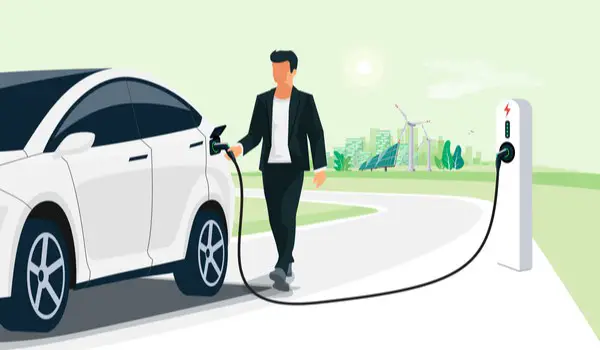
Liability
If someone trips on the cable, they may consider the owner of the cable liable for any injury caused. This in itself puts a lot of people off trailing cables across a pavement. How likely is this to happen, and what might be the result?
The issue was explored by thisismoney.co.uk who consulted a personal injury lawyer. The advice is that any injury would need to be pretty severe to warrant a claim, and it would need to be demonstrated that the owner of the cable breached a duty of care and didn’t foresee that it might happen. If an EV owner takes some reasonable precautions, therefore, such as using a floor cable protector and minimising the length of cable, this ought to dramatically reduce the likelihood of a claim. Cable protectors are used widely in construction and events, for example, and a pavement-width length can cost as little as £20; they are brightly coloured and noticeable, and provide a ramp that makes it easier for less mobile pavement users to negotiate.
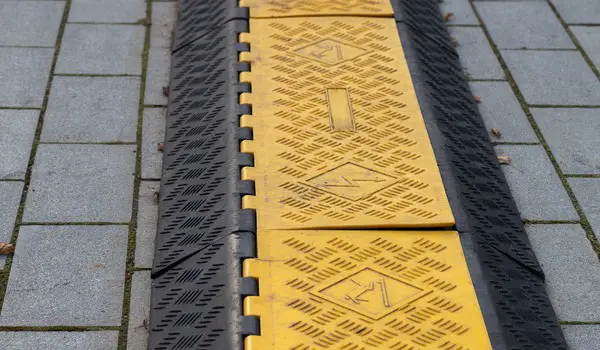
Another point to check is whether such a legal claim would be covered under the car insurance policy. Once again thisismoney.co.uk investigated by speaking with the car insurer LV. Their electric car policies do cover claims arising from cables trailed across the pavement, as do numerous other EV policies offered by other car insurers in the UK. This is a useful reassurance, and it would be well worth checking before considering using a trailing cable.
From an insurers’ point of view, the cover depends on whether charging the car is considered “use” of the car, in which case it should be covered by the insurance. A recent case did determine that charging an EV is considered “using” the car, and therefore insurance is applicable. This also, by the way, applies to the owner of the vehicle tripping up on their own cable! However, it’s worth checking that liability from claims is explicit in the policy, to avoid an argument with your insurer should the situation occur.
The view of one insurance company is that if someone makes a claim against one of their drivers for tripping on a cable, this would be akin to a claim made as a result of an accident. In other words there would be a process to go through of determining whose fault it was, after which the insurance company of the person at fault would foot the bill. This approach does seem to normalise cable trailing and make its use feasible.

Other commentators and EV owners point out that people do use pavements in similar ways, for example if you are vacuuming your car on the street there is likely to be a cable crossing the pavement for a period of time. Similarly, window cleaners often trail a hose from their van to the front of the house. And millions of people leave refuse and recycling bins on the pavement without fear of reprisals should someone trip over one.
Having said all that, the situation is best avoided if possible. Authorities such as Transport for London discourage it, and the campaign group Living Streets spoke out against the positive advice of Hants County Council, saying that it wasn’t a long-term solution.
Practicalities
Twenty years ago when electric vehicles were pretty experimental, using a cable like this might have been the only way for the trailblazers of the time to make it work. AA President and blogger Edmund King started trialling an electric car eighteen years ago, and used a cable which he hung out of the first floor window of his flat into the street below! At that time his new EV had a range of just 37 miles. A lot has changed since then.
Someone who is considering a plug-in EV for the first time needs to think the process through from end to end. If you don’t have off-street parking, can you guarantee that you will be able to park your EV directly outside your home? In areas with little off-street parking and no parking controls, it might often be difficult to park right outside, in which case there would be the difficulty of finding a cable long enough to reach to the car, and the additional risk of a longer length of cable which pedestrians could find obstructive.
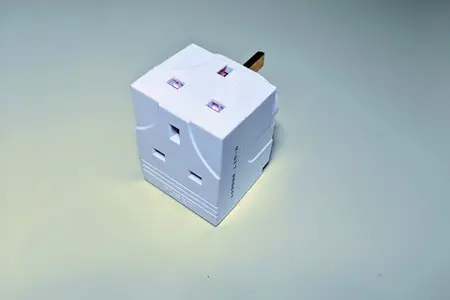
There’s also the issue of how you will be charging the car. It’s possible to charge an EV using a standard household three-pin plug. However, it takes much longer to fully charge the battery this way – which means that a trailing cable would be on the pavement for longer. It also puts additional load on the home electricity supply, and it’s strongly recommended to ensure that your household circuitry is up to date before doing this.
The government is encouraging EV owners to install home charging points by offering grants to put towards the cost. However, you can only get a grant (of up to £350, the average cost of a home charger being around £800) if you have private off-street parking. The grant is therefore not available to anyone who is planning to use the charge point to trail a cable across a pavement.
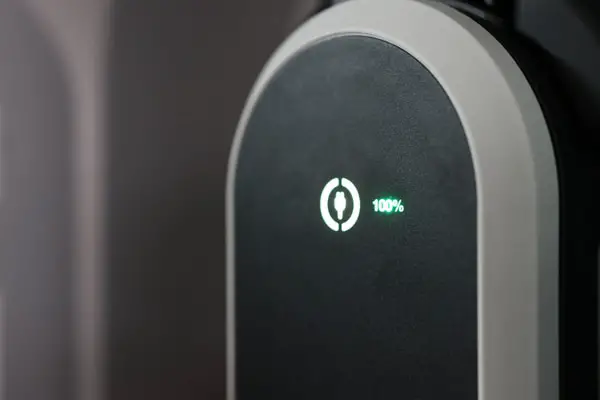
This means that either you pay for a home charge point and forego the grant, or you make do with three-pin charging. As well as longer charge times and the additional load, evidence suggests that many EV owners use standard extension leads to reach the car from their home. This is not recommended, as they are not suitable for use outdoors. A worrying number of people seem prepared to use them even when it’s raining (custom designed EV charging kit can be used in the rain). There are also reports of “daisy chaining” where someone might plug an extension lead into another extension lead, and so on. This isn’t recommended, even indoors, as it increases the likelihood of overload and fire.
Alternative Solutions
So for anyone considering moving to a plug-in vehicle, the best approach would be to explore other ways of charging the vehicle. Websites such as Zap-Map keep track of the rapidly increasing number of EV charge points, which also include commuter charging, car parks and gyms etc as well as lamp posts and bollards in residential areas. While some of these may not be quite as cheap as an EV-optimised home electricity supply, the saving compared with running petrol or diesel will still be significant, and the potential issues of trailing cables won’t apply.
Other solutions may be coming forward as well, for example, an induction mat which can be laid below the car, still in its infancy but a promising development. Co-charger is a scheme where you can “rent” other EV owners’ home charging points – a bit like AirBnB for charge points.
Checklist Before Trailing an EV Cable Across A Pavement
If, however, you feel that trailing a cable is the only way forward, here is a checklist below of points to consider in advance.
- Can you be sure that you’ll be able to park your car near enough to your home for the cable to reach?
- Will you be using a three-pin socket for charging? Is your home electrical circuitry up to date, and have you checked how long it will take to fully charge the battery that way?
- How are you going to avoid using extension leads outdoors and “daisy-chaining”?
- Do you want a home charging point and if so are you prepared to install one without the government grant?
- What advice does your local council offer about home charging and trailing cables across the pavement?
- What alternatives are there in the immediate area including lamp posts and bollards?
- Can you charge the vehicle at work, at a car park, or elsewhere?
- Is liability from tripping over a cable specifically covered in your car insurance?
- How can you make the cable as safe for pavement users as possible including using a cable protector or other means to make it flat and visible?
